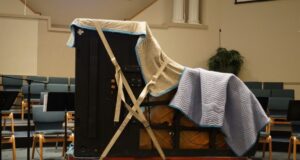One of the most basic human needs is safety. It’s part of why people seek stable jobs, good schools for their children, and neighborhoods with low crime rates. However, not all areas cultivate the same level of security and precaution.
If your neck of the woods lacks certain elements of security, it can cause those in your community to drift apart. This happens when neighbors disengage from each other and when little attention goes into cooperatively making the area safe.
But with a coordinated effort, everyone in your neighborhood can work toward making a safer, tighter-knit community. Keep reading to discover some of the ways to promote a safer, more trusting community.
1. Design The Environment
Crime Prevention Through Environmental Design is an approach to safeguarding an environment against bad actors. It’s about conditioning your area to have the best chance at deterring illicit activity by people inside and outside your community.
Start by identifying areas of your neighborhood that are closed off or difficult to see. This applies to dead ends of streets, clusters of trees, and dark spots with low lighting. Consistent maintenance and surveillance of these areas will keep them welcoming and discourage vandalism and neglect. You might want to add surveillance cameras or better lighting in these areas.
If lighting is an issue in your neighborhood, consider writing a letter to your local municipal office requesting the installation of better street lighting. To maximize the impact of your request, ask your neighbors to sign your letter. Better yet, ask them to send their own letters at the same time you send yours. Showing the collective concern of your whole community will increase the chance of convincing your town to help out. It’s similar to how a group of parents might request the installation of swing sets in a local park.
By demonstrating the shared interest and benefits for the community, you’re more likely to see positive changes implemented. Beyond visibility, it’s also important to keep your community clean. A well-kept neighborhood will show residents and potential offenders that the area is cared for and monitored. Simple touches like these can make the difference between a safe place and one that seems neglected and vulnerable to crime.
2. Form a Neighborhood Watch
You’ve probably noticed those signs with a silhouetted figure in a hat and a warning that “This Neighborhood is Watching” before. Similarly to how ADT signs deter thieves just because they know there’s a security system in place, neighborhood watches can do the same. The presence of these signs signals to potential criminals that the community is vigilant and that any suspicious activity will be promptly reported.
Studies have shown that neighborhoods with active watch programs experience lower crime rates too because the visible commitment to safety discourages illicit activity. Consider forming a neighborhood watch group where people can contribute toward the collective security of your community. These groups consist of individuals taking turns patrolling the area at peak hours of the day or night, where incidents are most likely to happen.
The key to making any watch effective is communicating closely and consistently with everyone in your neighborhood. You should also cooperate with local law enforcement. No one should be a stranger. When people aren’t familiar with each other, gaps in vigilance and apathy for others’ well-being can occur.
3. Join Community-Focused Social Media
Creating a safe neighborhood begins with strong relationships built on the shared goal of safety for all. Thankfully, there are many ways to foster these connections. Facebook community pages, such as local discussion groups or community forums, Buy, Sell, and Trade pages, or Free Giveaway pages, are excellent platforms for keeping in touch with your neighbors. These groups can be a hub for sharing important information, including safety concerns, local news, and events.
There are also specific community apps, like Nextdoor or Neighbors by Ring, that can enhance communication and safety. These are great for communicating with your neighbors, especially the ones at the opposite end of your street. These apps allow you to see and share the goings-on in your town. Users can post statuses reporting suspicious activity, power outages, lost pets, and unscrupulous businesses.
On the flip side, these platforms also help people grow closer. They provide a space for sharing updates about community projects, yard sales, service offerings, local news, and events. Additionally, they can be used to host groups, including neighborhood watches, ensuring everyone stays in the loop. By leveraging these platforms, you can enhance communication, fostering a stronger, safer, and more connected community.
4. Establish a Curfew
One way to make your home safer is to institute a curfew for minors. Some U.S. cities have automatically built-in curfews, but it is worth considering for cities with looser rules and regulations.
Curfews allow parents to better supervise their children’s whereabouts. That way, they can have more peace of mind knowing their kids are home at a specific time. Curfews also limit the number of people on the streets at night, which can reduce the likelihood of traffic collisions or pedestrian injuries. At the same time, they also deter teenagers from committing unlawful acts of vandalism that might be more likely to occur after certain hours of the night.
Abiding by a curfew also helps kids and teenagers establish healthy routines that lead to better rest and increased preparedness for school or work. Historically, community curfews were driven by when street lights kicked on. This signals parents and kids that it is time to return home for the night. Although it is an older method, the logic behind it still holds relevance today.
Lead Positive Change in Your Community
Safety starts with you but is accomplished by all. For your neighborhood to thrive, everyone has to be on the same page regarding protection and togetherness. If you notice not everyone is synced with pursuing safety standards, you can be the one to align them.
Be the voice of positive change and constructive ideas that other families will want to act upon. Express the collective commitment to security and harmony, especially for the children. Together, your community can build a safe and welcoming environment where everyone feels secure and valued.
















